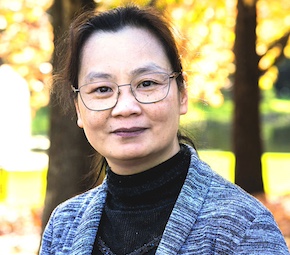Macquarie University's Centre for Analytical Biotechnology (MUCAB) lab will host a new state-of-the-art integrated multimodal microscopy facility for single molecule analysis, funded by a $500,000 ARC Linkage Grant.
Macquarie University has been awarded a prestigious $500,000 Australian Research Council (ARC) Linkage Infrastructure, Equipment and Facilities grant to establish a state-of-the-art integrated multimodal microscopy facility for single molecule analysis.
The new facility, to open mid-2024, will be the first of its kind in Australia, and feature an integrated Atomic Force microscope and a Raman microscope for Tip-enhanced Raman Spectroscopy.
Macquarie University's Centre for Analytical Biotechnology (MUCAB) lab will host the facility, giving new capabilities for researchers from both academia and industry to get molecular information and high-resolution imagery at a nanoscale level.
The project is headed up by Professor Yuling Wang, an ARC Future Fellow from Macquarie’s School of Natural Sciences, supported by a team of the university’s senior scientists including Professor Alison Rodger, Professor Nicolle Packer, Associate Professor Yijiao Jiang and Associate Professor Alfonso Garcia Bennett.
 “The success of this grant is a significant milestone, not only for my own research but also for Australian researchers and the broader scientific community,” says Professor Wang.
“The success of this grant is a significant milestone, not only for my own research but also for Australian researchers and the broader scientific community,” says Professor Wang.
“The new facility will enable cutting-edge research, foster collaborations, and ensure that Australian researchers have access to the latest technology critical to maintaining world-class research and opening new research areas,” she adds.
Professor Wang says the facility will enhance her own research developing cancer diagnostic devices, as she will be able to view sensor surface structures in high-resolution and simultaneously observe how sensors interact with different molecules.
“This will help us develop highly sensitive and flexible sensors that can be used to monitor healthcare-related bio-signals,” she says.
“We will be able to characterise and quantify the way proteins interact on nanoparticles, giving us valuable information for developing point-of-care and in-vitro cancer diagnostic devices.”
Another critical research application for this facility includes improved understanding of catalysis mechanisms for green energy conversion.
Associate Professor Yijiao Jiang from Macquarie’s School of Engineering intends to use the facility to develop innovative catalytic systems on semiconductor surfaces that can use sunlight to convert carbon dioxide into high energy-content products.
“The establishment of this microscopy facility gives Australian researchers access to the technology needed to maintain their position at the forefront of global scientific research,” says Professor Lucy Marshall, Executive Dean of the Faculty of Science and Engineering at Macquarie University.
“It will also foster collaboration across disciplines, allowing us to tackle complex problems in new ways so we can develop the innovative solutions and transformative technologies of the future,” she says.